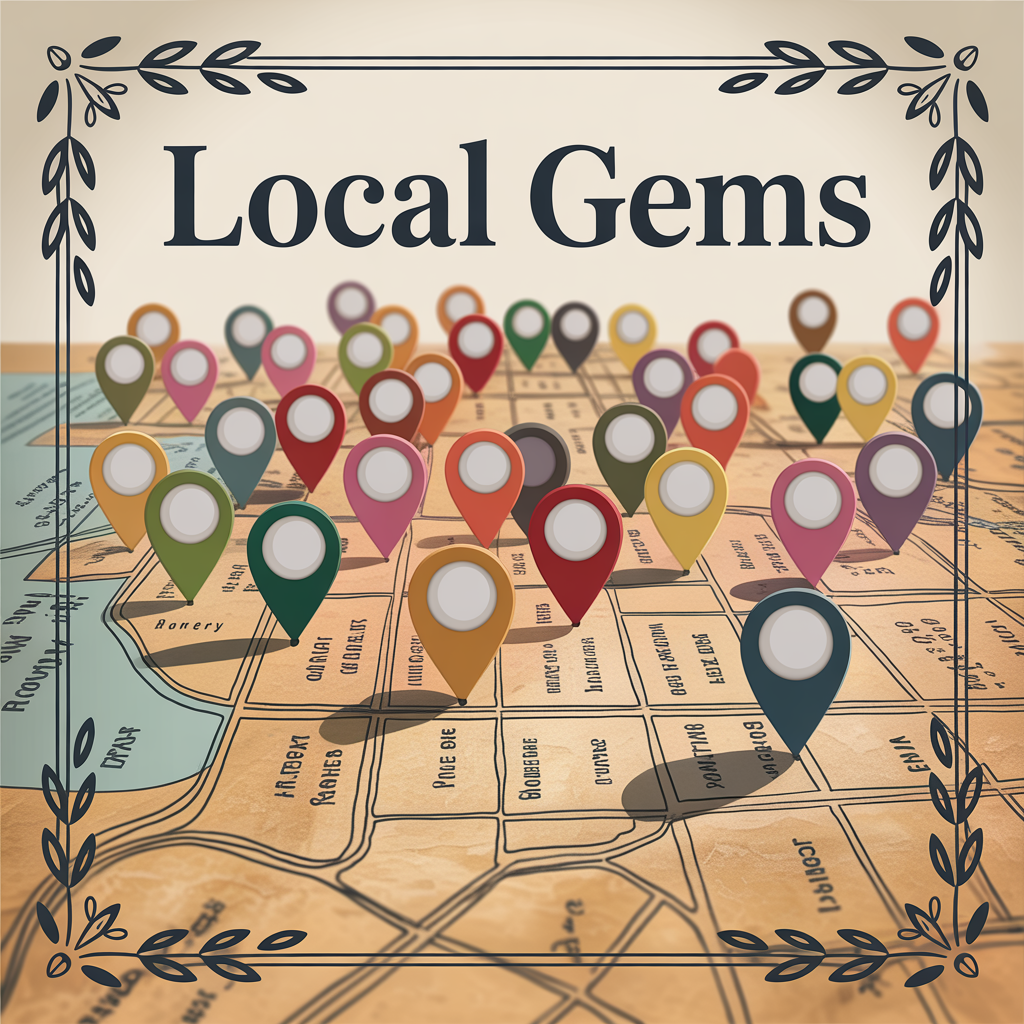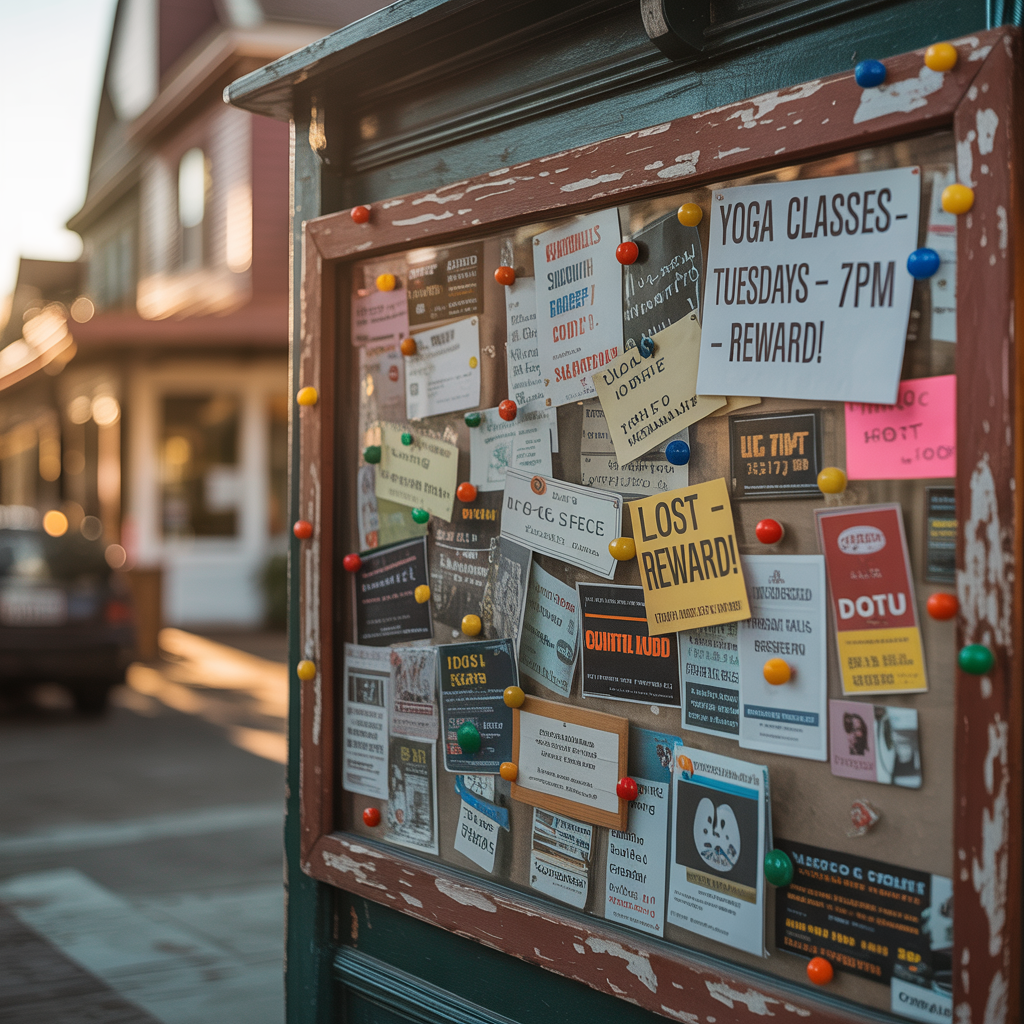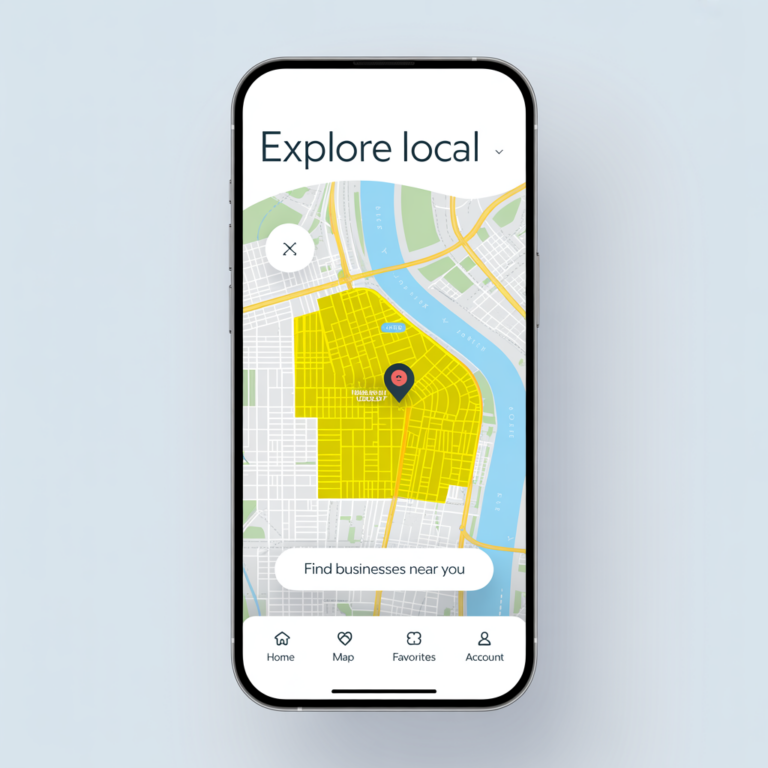Hyperlocal SEO is a focused approach to online marketing that targets potential customers within a very small geographic area—often just a few blocks or up to a mile radius. Unlike broader local SEO that covers cities or regions, hyperlocal SEO zeroes in on neighborhoods or communities where your business operates.
Why Hyperlocal SEO Matters for Small Businesses
If you run a business that serves customers close to your location, like a café, boutique, or service provider, hyperlocal SEO helps you connect with nearby shoppers. It boosts your visibility to the right people, driving more foot traffic and sales.
The Role of AI and Geofencing in Hyperlocal Marketing
Artificial Intelligence (AI) combined with geofencing technology takes hyperlocal SEO to the next level. Geofencing creates a virtual boundary around your business area, and AI analyzes shopper behavior within this zone. This lets you send highly targeted ads and promotions to people when they’re physically nearby, increasing your chances of conversion.

Understanding Hyperlocal SEO
Definition and Key Concepts
Hyperlocal SEO focuses on optimizing your online presence to attract customers in a very tight geographic area. Key ideas include:
Targeting specific neighborhoods or blocks
Using highly localized keywords
Engaging with local communities online
Leveraging location-based technologies like geofencing
Difference Between Local SEO and Hyperlocal SEO
| Aspect | Local SEO | Hyperlocal SEO |
|---|---|---|
| Geographic Focus | City or larger region | Neighborhood or 1-mile radius |
| Keyword Targeting | Broad local keywords | Very specific local terms |
| Marketing Approach | General local presence | Highly targeted outreach |
| Tools Used | Google My Business, directories | AI-driven geofencing, hyperlocal content |
Hyperlocal SEO is more precise and can be especially useful for businesses relying on walk-in customers or very localized services.
Benefits of Hyperlocal SEO for Businesses
Increased foot traffic: Attract shoppers nearby who can visit your store immediately.
Better ROI: Ads and marketing are focused only on your prime audience.
Stronger community presence: Build trust by engaging with your neighborhood.
Less competition: Target niche areas where bigger brands might not reach effectively.
Core Hyperlocal SEO Strategies
Optimizing Google My Business for Hyperlocal Reach
Claiming and Verifying Your Listing
Start by claiming your Google My Business (GMB) profile. Verify your business address to appear in local searches and Google Maps.
Using Accurate Business Information
Make sure your name, address, phone number (NAP), and business hours are consistent and up-to-date. This builds trust with search engines and customers.
Leveraging Google Posts and Q&A
Regularly post updates, offers, and events on your GMB profile. Respond quickly to customer questions to improve engagement and local visibility.
Creating Location-Specific Content
Writing Hyperlocal Blog Posts and Landing Pages
Create content focused on your neighborhood, streets, or local events. For example, a café could write about “Best Coffee Spots Near Downtown West.”
Using Local Keywords and Phrases
Include keywords that people use in your immediate area. Examples: “Bakery on Maple Street,” “24-hour gym near Central Park.”
Incorporating Neighborhood and Street Names
Mention specific local landmarks or neighborhood names naturally in your content to help search engines connect your business to that area.
Building Local Citations and Listings
Importance of Consistent NAP (Name, Address, Phone)
Your business information should be exactly the same across all online directories. Inconsistencies confuse search engines and harm rankings.
Choosing Relevant Hyperlocal Directories
List your business on niche and neighborhood-specific directories in addition to major platforms like Yelp, TripAdvisor, or Yellow Pages.
Monitoring and Managing Citation Accuracy
Use tools or manual checks to ensure your listings remain accurate over time, especially after any business changes.
Advanced AI-Driven Geofencing Techniques
What is Geofencing in Marketing?
Geofencing is like drawing an invisible fence around a specific location using GPS or RFID technology. When people enter or exit this area, it triggers an action—usually a marketing message. Imagine your customer’s phone buzzing with a coupon as soon as they walk near your store. That’s geofencing in action.
Basic Concepts and Applications
Virtual boundaries: Set up around your business or target zones.
Triggers: Notifications, ads, or special offers sent when someone crosses the boundary.
Real-time marketing: Engage shoppers at the exact moment they are nearby.
This tech is a game changer for businesses wanting to catch attention in crowded markets.
How AI Enhances Geofencing Accuracy
AI helps by analyzing tons of data about shopper behavior, foot traffic patterns, and preferences. It can:
Identify hotspots where your ideal customers gather.
Predict the best times to send marketing messages.
Customize offers based on individual shopper habits.
This means your geofencing campaigns aren’t just guessing—they’re smart and data-driven.
Setting Up AI-Driven Geofencing Campaigns
Defining the 1-Mile Radius Target Area
Start by choosing a precise radius around your business—1 mile is perfect for many urban and suburban businesses. This keeps your messages highly relevant to shoppers nearby.
Using Data to Identify High-Value Shopper Zones
AI tools analyze where potential customers spend time within your radius. For example, a restaurant might find that local parks and shopping centers attract hungry crowds at lunchtime.
Integrating with Paid Ads and Push Notifications
Combine geofencing with:
Paid ads on platforms like Facebook and Google Ads.
Push notifications sent via your mobile app or partner apps.
SMS or email campaigns triggered when customers enter your zone.
This multi-channel approach boosts visibility and engagement.
Measuring and Optimizing Geofencing Results
Tracking Engagement and Conversions
Use analytics to see how many people:
Received your message.
Clicked your ad or offer.
Visited your store or made a purchase.
This data tells you if your geofencing campaign is working.
Adjusting Boundaries Based on Performance Data
If certain parts of your 1-mile radius show low engagement, shrink or move your geofence. Conversely, expand into areas with high shopper interest.
Leveraging AI Insights for Continuous Improvement
AI tools provide ongoing recommendations to:
Refine your targeting.
Optimize messaging timing.
Personalize offers for better results.
Think of it as having a marketing assistant who never sleeps, always tuning your campaigns for success.

Supporting Hyperlocal SEO Tactics
Encouraging Hyperlocal Reviews and Testimonials
How Local Reviews Boost SEO
Reviews from nearby customers do more than just build trust—they signal to search engines that your business is active and relevant in your community. Positive reviews improve your rankings and influence potential buyers to choose you over competitors.
Strategies to Collect Reviews from Nearby Customers
Ask in person: Train staff to kindly request reviews after a positive experience.
Follow up via email or SMS: Send quick links to your Google My Business or Yelp page.
Offer incentives: Small rewards like discounts or freebies can encourage honest reviews.
Make it easy: Provide clear instructions or QR codes to simplify the review process.
Remember, genuine and detailed reviews help most.
Engaging with the Local Community Online
Using Social Media to Target Local Audiences
Social platforms like Facebook, Instagram, and Nextdoor allow you to connect with neighbors and local groups. Share updates, events, and promotions tailored specifically to your neighborhood.
Post pictures or stories featuring local landmarks.
Tag nearby businesses or community organizations.
Run hyperlocal paid ads targeted by zip code or radius.
Participating in Local Forums and Groups
Join online community forums or groups where locals chat about events, services, or recommendations. Engage genuinely by answering questions, sharing expertise, or offering exclusive local deals.
Mobile Optimization for Hyperlocal Search
Ensuring Fast Loading on Mobile Devices
Most hyperlocal searches happen on mobile phones. A slow-loading website frustrates users and harms your search rankings. Use tools like Google PageSpeed Insights to keep your site fast and responsive.
Using Location Services and Push Notifications
Enable location-based services on your website or app to deliver personalized offers. Push notifications can remind customers of sales or events when they are physically close to your business.
Common Challenges and How to Overcome Them
Managing Overlapping Service Areas
If your business serves multiple neighborhoods or towns, you might face overlapping zones where customers see mixed information. This can confuse search engines and users.
How to manage it:
Create distinct landing pages for each service area with unique content.
Use clear, consistent NAP (Name, Address, Phone) information for each location.
Utilize geofencing boundaries carefully to avoid overlaps in campaigns.
Avoiding Keyword Stuffing in Hyperlocal Content
It’s tempting to cram every neighborhood name and street into your content to boost rankings. But overdoing it hurts readability and can lead to penalties from search engines.
Tips to keep it natural:
Use local terms only where they fit naturally.
Focus on providing useful information, not just keywords.
Vary the wording—use synonyms and related phrases.
Keeping Location Data Up-to-Date
Outdated addresses, phone numbers, or hours frustrate customers and harm your search rankings. It also reduces the effectiveness of geofencing campaigns.
Best practices:
Regularly audit all online listings and citations.
Update your Google My Business profile promptly after changes.
Inform your team to communicate any changes immediately.
Maintaining accuracy and clarity in your hyperlocal SEO efforts keeps customers happy and search engines confident in your business.
Breaking It All Down
Hyperlocal SEO combined with AI-driven geofencing is a powerful way to connect with shoppers right in your neighborhood. By focusing on a tight 1-mile radius, you deliver relevant messages that catch people’s attention when they’re most ready to visit or buy.
Optimizing your Google My Business profile, creating location-specific content, and building accurate citations lay the groundwork. Then, using AI to set up smart geofencing campaigns lets you reach customers at just the right time and place.
Supporting tactics like gathering local reviews, engaging with your community online, and ensuring your site works flawlessly on mobile all add fuel to your hyperlocal marketing fire.
Of course, challenges like managing overlapping areas and avoiding keyword stuffing exist, but with careful attention, they’re easy to overcome.
Start small, measure results, and let AI guide your hyperlocal SEO journey. The payoff? More foot traffic, better customer loyalty, and a stronger local presence. Your neighborhood is waiting—go claim it!
Frequently Asked Questions
How does hyperlocal SEO impact my business's online reputation?
Hyperlocal SEO helps generate more reviews and engagement from nearby customers, which strengthens your reputation within the community and boosts trust among potential shoppers.
Can small businesses without a physical storefront benefit from hyperlocal SEO?
Yes! Service providers like plumbers, tutors, or mobile businesses can use hyperlocal SEO to target customers within specific neighborhoods they serve, increasing relevant leads.
What types of businesses benefit most from AI-driven geofencing?
Retail shops, restaurants, event venues, and service providers who rely on local foot traffic or immediate visits gain the most from AI-driven geofencing campaigns.
How often should I update my hyperlocal content?
Aim to refresh location-specific blog posts or landing pages at least quarterly or whenever there are community events, new developments, or seasonal changes that affect your audience.
Are there privacy concerns with geofencing marketing?
Yes, businesses must respect privacy laws and obtain necessary consents when collecting location data. Transparency and opt-in permissions are essential for ethical geofencing practices.
What tools can help me monitor my hyperlocal SEO performance?
Tools like Google Analytics, Google My Business Insights, Moz Local, and specialized geofencing platforms provide data on traffic, engagement, and conversions.
Can AI-driven geofencing work for online-only businesses?
While primarily designed for physical locations, AI-driven geofencing can support online promotions targeting users based on their geographic data, helping localize digital marketing efforts.
How do I balance hyperlocal SEO with broader regional marketing?
Use hyperlocal SEO to capture immediate neighborhood interest while maintaining broader regional campaigns to attract customers from surrounding areas.
What are some common mistakes to avoid in hyperlocal SEO?
Avoid inconsistent business listings, overusing local keywords, neglecting mobile optimization, and ignoring customer reviews.
How can I integrate social proof into my hyperlocal SEO strategy?
Showcase local customer testimonials and reviews prominently on your website and social media to build credibility and attract nearby shoppers.
Offsite Resources
Moz — https://moz.com
A leading authority on SEO with comprehensive guides and tools for local and hyperlocal optimization.Search Engine Land — https://searchengineland.com
Offers up-to-date news, insights, and tutorials on SEO trends, including local and AI-driven strategies.Google My Business Help — https://support.google.com/business
Official resource to help you optimize and manage your Google My Business profile effectively.HubSpot Marketing Blog — https://blog.hubspot.com/marketing
Covers marketing tactics, including geofencing, local SEO, and AI marketing techniques.Neil Patel — https://neilpatel.com
Expert insights on SEO, content marketing, and local search strategies with actionable tips.BrightLocal — https://brightlocal.com
Specialized tools and resources for managing local SEO and reputation management.LocalU — https://localu.org
Offers training, webinars, and resources focused entirely on local and hyperlocal SEO.

What's Next?
The SEO insights shared on this page come directly from our co-founder, Matt LaClear, who has successfully led over 13,277 SEO campaigns since 2009. With more than a decade of hands-on experience, Matt knows exactly what it takes to help small businesses stand out online.
Get Your Free Custom SEO Strategy Call
Ready to boost your SEO and grow your business? Matt is offering a free, no-obligation strategy call where you’ll get:
Personalized SEO recommendations tailored to your unique needs
Clear, actionable steps to increase your online visibility
Expert insights aligned with your business goals
Don’t miss this chance to get advice backed by real experience.
Claim your free SEO strategy call today and start seeing results!

